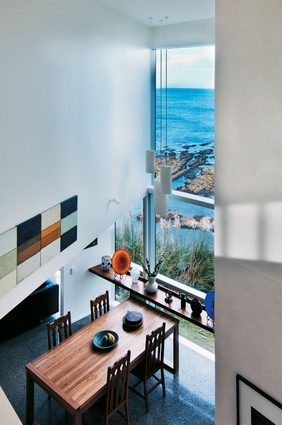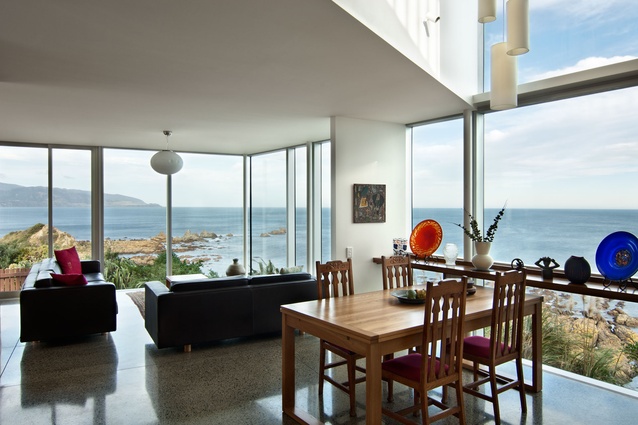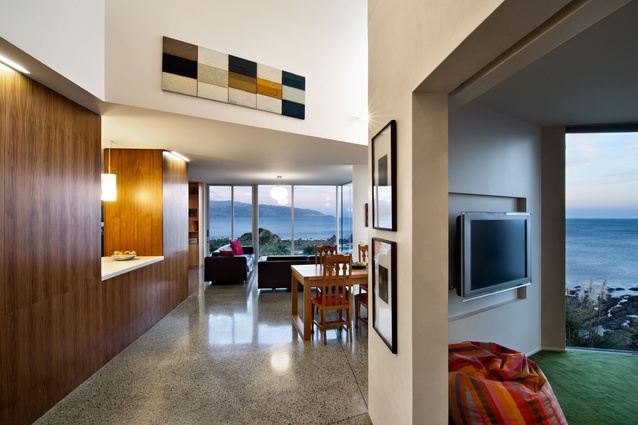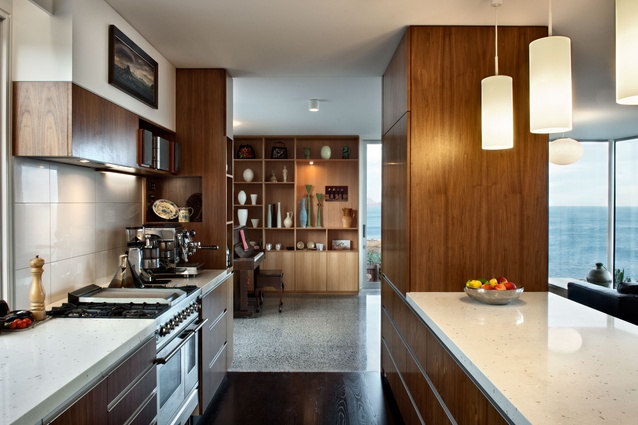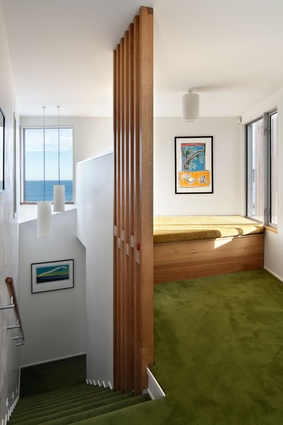Houses revisited: Cook Strait House
High above Island Bay's lighthouse is a jagged mountainous form of a building, clad almost entirely in zinc. Its soft grey exterior could appear harsh except that an appropriate armour of battle readiness is required to stand up against the might of the Cook Strait. A previous wooden house on the site famously imploded during the Wahine storm of 1968 but, this time, Wellington's coastal weather is no match for Tennent & Brown Architects' robust new design, which requires little maintenance against salt spray and gale-force winds. First published in 2013.
Look out from any of this house’s warm, spacious and surprisingly serene rooms and be seduced by views to die for: rugged fingers of rock claw their way out into the ocean, forming rock pools directly beneath the site; while looking south, a ghostly vision of the South Island’s Kaikoura hills settles on the horizon line. Boats, dolphins and whales pass by and even the hills to the north of the bay – seen from the kitchen, the courtyard and the upstairs corridor and nook – are a feast for the eyes. These sights are echoed in the distinctive local colours and the high-quality natural materials of the interior.
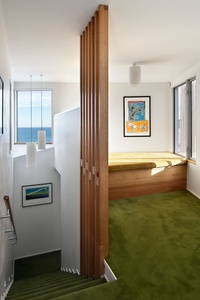
Beautifully planned and detailed, everything about this house fits contextually within its challenging clifftop site. Over the water, the lush mossy-olive green foliage of Taputeranga Island is mimicked in the bespoke-dyed carpet of the library, bedrooms and studies; rich tobacco-coloured tiles in one bathroom reference the slippery brown seaweed in the rock pools below; while the pebble-strewn polished concrete floor in the living area and timbers used throughout the house mirror the coastal landscape.
Upon arriving at the house from the street, a winter garden provides visitors with shelter from wind and rain. Enter into a sculptural space of intersecting rooms and staircases; this light-filled, double-height atrium allows the owners to easily talk with each other, from their individual studies and bedrooms on different levels, through cut-outs in the walls and from an overhead bridge on the first floor.
From the outset, the owners gave the architects a clear brief that they wanted to “live in the view”, to “track the sun around the house” and “find suitable places to sit at different times in the day”. Downstairs, a large study is nestled into the hill, while upstairs a stairwell encloses a snug, providing a play space for the owner’s daughter, situated just off her bedroom. The corridor also acts as a sunroom for reading while, next door, the main bedroom opens up into a dressing room with a panoramic ocean view.
On the ground floor, an open living/kitchen area links into a library, guest room, bathroom, laundry and study. The kitchen features stone worktops, bespoke walnut cabinetry and a seductive burnt timber floor, alongside a sunny informal eating area at one end. Both look out into the winter garden and a secluded north-facing courtyard. On the exterior, silvery cedar fins allow just enough light and warmth in to avoid overheating the interior.
The architect-builder-client relationship was an immensely happy one and, surprisingly, the client would be keen to do it all over again, except they probably won’t; it seems as if they have already found their perfect place in the world.
Click here to see more Houses Revisited. And sign up to our email newsletters to receive Houses Revisited straight to your inbox.
Note: These are stories from our archives and, since the time of writing, some details may have changed including names, personnel of specific firms, registration status, etc.



